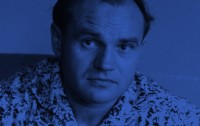Continuum (1966). Sextett for percussion instruments
Premiered on 17 September 1967 in Stockholm by Les Percussions de Strasbourg, Continuum is one of the most sophisticated examples among Kazimierz Serocki’s works of spatial action of sound colours, which constitute the basic composition material (as in sonoristic technique). Around the audience sitting in the middle of the concert hall are placed the performers (six percussionists) in a way that enables them to see each other and each of them with his or her own set of instruments (no fewer than 123 in total) is a separate source of sound. This is the basic concept of the work, although Serocki did allow a concert version with instruments arranged on stage.
With the spatial arrangement of the instruments the listeners not only have the illusion of sound movement between the percussion groups, but also have an opportunity to capture the mechanism of the emergence of various timbre “mixtures” stemming from changes in the trajectory and direction of this movement, and from the material used (e.g. “wooden” or “metallic” sounds). The idea is to surround the listeners with music coming from all directions – or with one type of colour or contrasting, often surprising types. The sounds either merge into one perceptual stream or are split into separate qualities.
The music is organized into 36 short sections varying in terms of expression, which are put together in accordance with the principle of contrast (serious and slow fragments are interspersed with lively and joyful ones), and which end with a series of seven cluster chords on bar instruments (e.g. campanelli, xylomarimba, and vibraphone)
Serocki’s Continnum waited for a long time for its Polish premiere. Although it was planned for the 1968 Warsaw Autumn, which was to have been combined with the Festival of the International Society for Contemporary Music, the performance was cancelled because of a boycott caused by the participation of the Warsaw Pact troops in the invasion of Czechoslovakia. When the piece was finally performed at the Warsaw festival in 1972, the effect was stunning. The brilliant performers encored the composition at the request of the enthusiastic audience.



